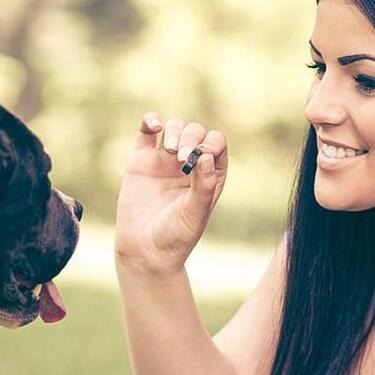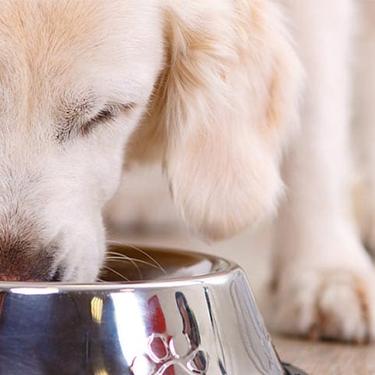
-
Find the right food for your pet
Take this quiz to see which food may be the best for your furry friend.
Find the right food for your pet
Take this quiz to see which food may be the best for your furry friend.
Featured products
 Small & Mini Savory Stew with Chicken & Vegetables Dog Food
Small & Mini Savory Stew with Chicken & Vegetables Dog FoodA delicious complement to the nutrition of Science Diet Small & Mini 7+ dog food
Shop Now Adult 7+ Perfect Digestion Chicken, Whole Oats & Brown Rice Recipe Dog Food
Adult 7+ Perfect Digestion Chicken, Whole Oats & Brown Rice Recipe Dog FoodScience Diet's breakthrough nutrition supports ultimate digestive well-being & healthy microbiome for dogs age 7+
Shop Now Adult Healthy Cuisine Roasted Chicken, Carrots & Spinach Stew Dog Food
Adult Healthy Cuisine Roasted Chicken, Carrots & Spinach Stew Dog FoodDelicious roasted chicken paired with tender vegetables in a succulent stew
Shop NowFeatured products
 Adult 7+ Senior Vitality Chicken & Vegetable Stew Cat Food
Adult 7+ Senior Vitality Chicken & Vegetable Stew Cat FoodImproves Everyday Ability to Get Up & Go
Shop Now Adult 7+ Tender Tuna Dinner Cat Food
Adult 7+ Tender Tuna Dinner Cat FoodWith delicious chunks in a decadent gravy
Shop Now Adult Savory Entrée Can Variety Pack Cat Food
Adult Savory Entrée Can Variety Pack Cat FoodPrecisely balanced nutrition with the delicious taste of savory minced chicken to help fuel the energy needs of cats during the prime of their life
Shop Now -
Dog
- Dog Tips & Articles
-
Health Category
- Weight
- Food & Environmental Sensitivities
- Urinary
- Digestive
- Joint
- Kidney
-
Life Stage
- Puppy Nutrition
- Adult Nutrition
- Senior Nutrition
Cat
- Cat Tips & Articles
-
Health Category
- Weight
- Skin & Food Sensitivities
- Urinary
- Digestive
- Kidney
-
Life Stage
- Kitten Nutrition
- Adult Nutrition
Featured articles
 Do Dogs and Cats have Belly Buttons?
Do Dogs and Cats have Belly Buttons?Learn whether cats & dogs have belly buttons like humans, what the function is, and if there are any health concerns associated with it.
Read More Does My Pet Hate Me?
Does My Pet Hate Me?Learn tips for bonding with your pet if you've ever thought, 'My dog doesn't like me, or 'Why do I have a standoffish cat?'
Read More Why Are Dogs and Cats So Cute?
Why Are Dogs and Cats So Cute?If waggy puppy dog tails and furry kitten yawns make you swoon, you're not alone. Why are cats so cute? And, dogs too! Let's find out!
Read More -


Whether you're going on an extended road trip or for a short drive, car travel with a dog can be a lot of fun. However, traveling with dogs in a car can pose a lot of safety risks. Read on for tips on how to safely transport your dog and minimize the dangers inherent when riding in the car with them.
Crates Are Best
When traveling with dogs in a car, the American Society for the Prevention of Cruelty to Animals recommends securing dogs of all sizes in travel-rated crates or carriers, both for the dog's safety and to prevent distractions while driving. If possible, crates should be secured in the back seat of a car or the cargo area of an SUV, station wagon, or minivan, and strapped in so that the crate won't slide around during sudden stops. The crate itself should be large enough for your dog to stand up, turn around, sit and lie down comfortably, while not so large that the dog can get tossed around inside the crate while the car moves. It should also provide plenty of ventilation. You can make the crate more comfortable for your dog by lining the floor with blankets, and even go a step further to safeguard against injury by padding the sides with foam. Just be sure your dog won't try to eat or chew any material you use for padding.
When a Crate Won't Work
If a crate is not an option, look for a safety harness that buckles directly into the seat belt buckle, and strap your dog into the back seat. Another commercially available option for safer car travel with dogs is a mesh or metal barrier made to place in minivans, and SUVs to keep your furry friend confined to the back seat. While these options are great for keeping your pup from distracting you or getting underfoot while you're trying to focus on the road, they're not designed to protect them from injury during a crash. Although it might seem like these options provide your buddy with more freedom and make the ride more enjoyable, for their own safety, a crate or carrier is still best.


Tasty Tips
When There Is No Back Seat
While the back of the car is generally safest for your dog, due mainly to potential injury from front-seat airbags, sometimes there isn't a back seat or cargo hold, as is the case with regular truck cabs or two-seater cars. In this case, it's best to secure your dog in a crate or carrier in the passenger seat and turn off the passenger-side airbags. If your dog is too large for a crate to fit in the front seat, use a safety harness to buckle them in. Under no circumstances should they be allowed to ride in the back of an open pickup truck.
On an extended road trip, it can be tempting to drive as far as you can as fast as you can (while still obeying the speed limits of course), but don't forget about your four-legged passenger in your haste to get where you're going. Plan to stop every two hours or so to give your pup a break, let them stretch their legs and do their business. It's also a good idea to bring fresh water and give your dog a drink whenever you stop. If they are not prone to getting car sick, this is also a good time to feed them a small meal.
Traveling in Comfort
Remember that these guidelines for traveling with dogs in a car are for your dog's safety as much as that of yourself and your other passengers. As such, dogs of any size should be safely restrained. Your tiny dog might be perfectly content to curl up in your lap during the trip, but just as it wouldn't be safe to hold a child in your lap while driving, it's not any safer for your dog. Securing your pup in a crate or restraining device during your trip, regardless of breed or size, will make it much more likely that you two will reach your destination safely.


Jean Marie Bauhaus is a pet parent, pet blogger, and novelist from Tulsa, Oklahoma, where she usually writes under the supervision of a lapful of fur babies.
Related products
Related articles

Proper nutrition for your pregnant or nursing dog is vital to her and her puppy's health. Learn what you should do provide her with the proper nutrients.

Learn the the dangers of feeding your dog chocolate, which types are most dangerous, and what to do if you discover that they have consumed chocolate.

Learn how today's wet dog food blends have gotten a face lift, and how you'll provide your dog the nutrition he needs in the form he loves.

Learn about choosing the right dog food to help ensure your adult dog will receive the correct balance of nutrition.

Put your dog on a diet without them knowing
Our low calorie formula helps you control your dog's weight. It's packed with high-quality protein for building lean muscles, and made with purposeful ingredients for a flavorful, nutritious meal. Clinically proven antioxidants, Vitamin C+E, help promote a healthy immune system.
Put your dog on a diet without them knowing
Our low calorie formula helps you control your dog's weight. It's packed with high-quality protein for building lean muscles, and made with purposeful ingredients for a flavorful, nutritious meal. Clinically proven antioxidants, Vitamin C+E, help promote a healthy immune system.

